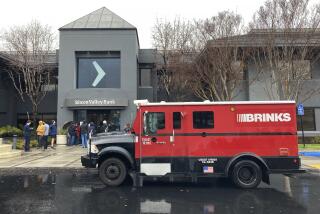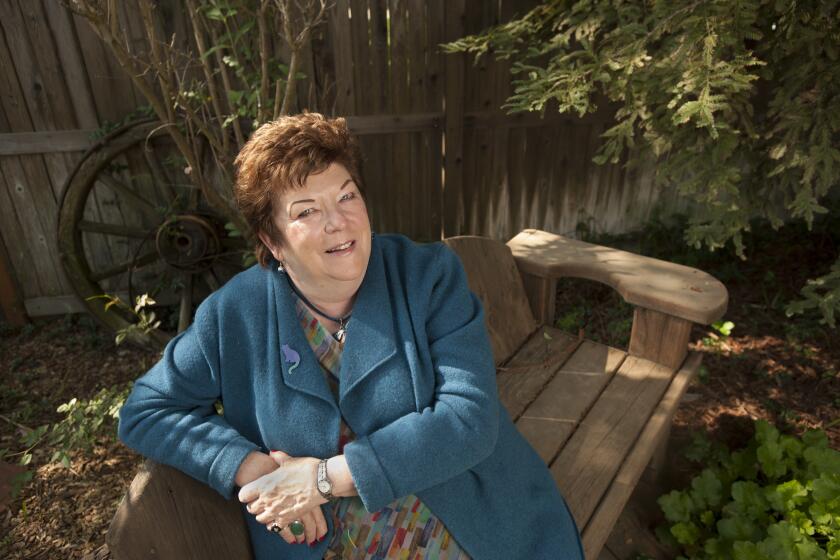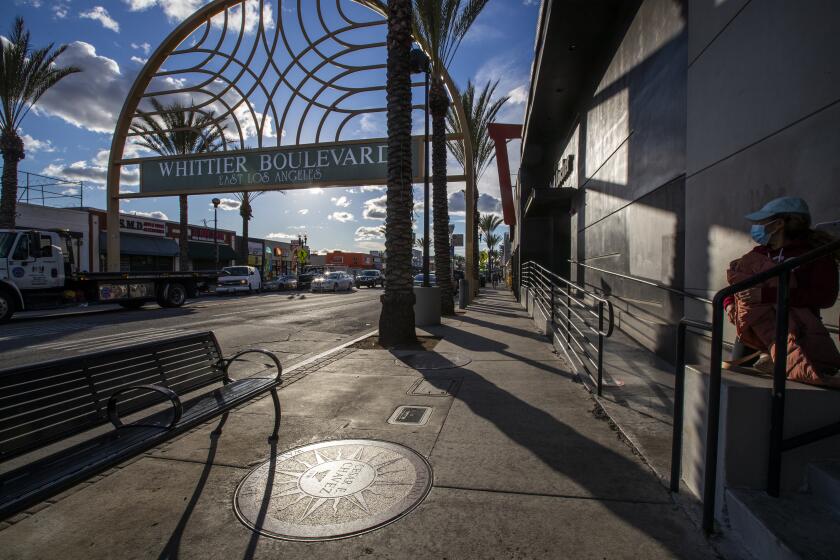Initial Steps in Crash Probe Wrapped Up
Federal investigators Friday made a final tour of the once-quiet Cerritos neighborhood devastated by the wreckage of an Aeromexico DC-9 and a small private airplane that collided in flight and prepared to return to Washington to analyze their data.
“Now,” said John Lauber, who is in charge of the National Transportation Safety Board investigation, “comes the hard part . . . trying to figure out exactly what happened.”
Lauber was accompanied in his final walk through the charred suburban landscape by Rep. Robert Dornan ((R-Garden Grove), who represents the area where the crash occurred, and Rep. Glenn M. Anderson (D-Hawthorne), a member of the House subcommittee on aviation.
Advocates of Safety Measures
Both men are longtime advocates of air safety measures.
“It’s human nature, tragically, that it takes a horrible tragedy like this to spur people to action,” said Dornan, who introduced bills in 1979 and 1985 calling for development of a mandatory cockpit collision-warning system for all commercial, military and corporate aircraft.
“Whether you are in Chicago, New York, Los Angeles, Orange County, Ventura, San Bernardino or Riverside, it should be mandatory . . . that you have an aircraft collision-avoidance system,” Dornan said.
Critics of Dornan’s bill, which would call for development of a small radar screen that would give pilots an audible alarm warning them of approaching aircraft, contend that the devices would be too costly. But Dornan contends they could be developed for as little as $800 each.
“This can’t go on in an area like Los Angeles,” said Anderson, who is the second-ranking member of the House Committee on Public Works. “We have an awful lot of airlines active here. We need a little more control.
Need for Controllers Cited
“I’ve been one of those saying we need more traffic controllers, and I’m going to fight for more traffic controllers.”
The Los Angeles City Council also took action in the matter, voting 11 to 0 to urge private pilots to stay in constant radio contact with airport traffic controllers and to maintain and operate “transponder” tracking devices in working order when flying in this area.
Councilman Richard Alatorre, who introduced the proposals, said he was surprised to learn that many pilots do not turn on their radio or have faulty equipment on board.
“What we’re basically asking for are common-sense things, easy to implement,” Alatorre said.
The council also agreed to ask the city’s Department of Airports to prepare and distribute a pamphlet for pilots instructing them in proper radio communication procedures, and the council’s Industry and Economic Development Committee plans a public hearing on air safety in the near future.
The field investigation is “basically complete,” Lauber said. A few investigators may linger behind over the weekend, he said, wrapping up interviews with the 93 known witnesses to the tragedy and checking final details, but most will return to Washington today or Sunday.
He said a special “human performances group” has been set up to obtain as complete a picture as possible of William Kramer, pilot of the Piper, beginning with his medical history and continuing through development of a psychological profile.
Pilot’s Cousin Interviewed
Lauber said investigators have talked to Kramer’s cousin, who is also a private pilot. He said the cousin told them that they had discussed procedures for flying from Torrance Airport to Big Bear over dinner about two weeks before the collision.
The cousin told investigators that Kramer had agreed that the best procedure would be to keep his eastbound course below the Terminal Control Area “floor” of 6,000 feet until he was east of the Orange Freeway, which both considered a good landmark.
Lauber said Thursday that Kramer might well have mistaken one freeway for another. Private pilots often use the area’s maze of freeways as landmarks on clear days such as the one on which Sunday’s collision occurred, he said, adding that Kramer had lived in the area only about nine months, having moved from Spokane, Wash., in January.
Meanwhile, the Los Angeles County coroner’s office released the first positive identifications of the remains of crash victims, and coroner’s spokesman Bill Gold said this work was expedited by a new, computerized identification program.
Col. Lewis Lortin of the U.S. Army Institute for Dental Research, a dentist who was in charge of developing the system, brought it to Los Angeles as “a gift from the United States Army to Los Angeles County” and helped get the program running on the coroner’s own computers and on one he brought with him.
The system uses medical, dental and other records (“We can even use anecdotal material--friends or relatives who recall that a person had undergone an appendectomy, or had not; that the person had some other physical attribute”) to eliminate possible incorrect identifications--and thus narrowing the field of correct ones.
Lortin said the system is “limited to what a computer does best . . . simple, repetitive tasks, sorting of data.”
He said this will be one of the earliest operational uses of the system and said data discs and other software and documentation needed to keep it running will be left in place in Los Angeles when he returns to his home in Maryland.
More to Read
Start your day right
Sign up for Essential California for news, features and recommendations from the L.A. Times and beyond in your inbox six days a week.
You may occasionally receive promotional content from the Los Angeles Times.






